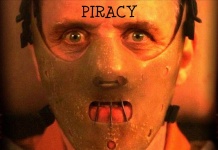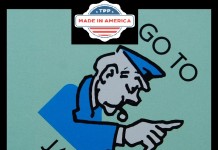 Arthur Conan Doyle, the spiritual father of Sherlock Holmes, died in 1930, having published most of the stories about his sleuthing hero before 1923. That effectively makes Sherlock Holmes part of the public domain in by far the largest part of the planet, and if you want to rewrite Sherlock Holmes stories where the great detective wears a leotard and recites Keats all day, you can. That is what it means when a work is in the public domain.
Arthur Conan Doyle, the spiritual father of Sherlock Holmes, died in 1930, having published most of the stories about his sleuthing hero before 1923. That effectively makes Sherlock Holmes part of the public domain in by far the largest part of the planet, and if you want to rewrite Sherlock Holmes stories where the great detective wears a leotard and recites Keats all day, you can. That is what it means when a work is in the public domain.
Except you cannot; the estate of Conan Doyle has trademarked the character of Sherlock Holmes and many of the other recurring characters from the series. This week the Financial Times explores the trademarking of literary characters and worlds in a Danuta Kean article pithily titled Posthumous publishers who refuse to live and let die (may or may not be behind a pay wall).
Without naming any actual figures, Kean reports that the “resurrection trade […] has made literary estates some of the most powerful in the media.” What this means for the owners of the works, the public? Reports Kean:
For dead authors who are still in copyright, trademarking may help estates keep control after the [copyright] term ends, says intellectual property lawyer Laurence Kaye. “If you intend to republish a book that has gone out of copyright, you would have to do it in a way that did not infringe any trademarks.”
Copyright law enshrines a deal in which the public stimulates artists to give away their works in exchange for a limited control over the distribution of these works. News stories these days often revolve around pirates: those members of the public that do not seem to be willing to keep their end of the copyright deal. Yet when you look closer, you see that neither side is willing to do so. It makes one wonder whether perhaps a new deal should be inked.


































I ran into an example of this the other day. I’m finishing off building a couple of Rietveld chairs for my porch. Rietveld was a Dutch designer who lived from 1888 – 1964. His famous chair is displayed in the Museum of Modern Art and was designed in 1923. You can see it here:
http://www.moma.org/collection/browse_results.php?object_id=4044
In doing some research about the chair I came across a Rietveld website that mentioned the chair but had no picture. According to the website, they did have a picture but the Reitveld estate required that they pay a royalty as the design of the chair was copyrighted. The site removed the picture.
So it isn’t just in publications that the long arm of copyright stretches out beyond the grave.
I think this is partly why copyright reform is going to become a bigger and bigger issue until fair use comes back. There was a case here of a documentary film-maker who wanted to use footage of his own grandfather, a former politician, in a background scene on his documentary. The CBC had priced the royalties for the footage so high that he could not afford it—of his own grandfather! And the issue of photographs of art in public places, it’s absurd, if I am walking in the park with my niece and want to take a picture of her, and there is a sculpture in the background, must I consult the sculptor first? What if I reproduce my photo to make holiday cards to send to my family? What if I want to sell the portrait of my niece to a magazine? It is insane, and my view is that if you put something out in public like that, you can no longer except to have full control over how people will interact with it. In my view, the fair use and public domain issues of publishing are the same. If you want full control over it, put in a drawer somewhere. But when you publish it, you accept that it’s out there in the world and people can, for example, post snippets of it for review purposes, or write academic papers on it. And after your death, it then descends into the public domain where it is part of the culture of humanity. That’s how it used to be, and I think we are headed back that way again. People are getting sick of a few greedy people ruining it for everybody else. There are a lot of ‘little guy’ artists who would be happy to have their work out there after their deaths, gaining new readers and fans, but restrictive copyright law is limiting that. Look at the whole orphan works debacle. It has just gone way overboard and I think the tide may soon be turning back the other way.
Grumpy old bookman has the complete backstory on the Sherlock Holmes issue (Thanks, google!).
Basically he reprints a letter from a US attorney with her opinion about the status of the Sherlock Holmes trademark. Interestingly, the lawyer points out that because the Sherlock Holmes copyright is jointly owned, either of the copyright owners could grant permission for derivative works.
The key issue is whether trademark applies to works where a small amount of the work is under copyright. It’s quickly becoming clear that Sonny Bono’s main benefit to corporations is not in the realm of copyright but the realm of trademark.
Specifically relating to Sherlock Holmes, there are a number of derivative works already published–and which have been published for a number of years. My understanding of trademark law is that, failure to enforce these marks renders them invalid.
That doesn’t negate the issue. Trademark is and has been an interesting second chance for those who don’t like the wiggle-room copyright law carries with it.
Rob Preece
Publisher, http://www.BooksForABuck.com
Isn’t that other Conan – The Cimmerian – also trade-marked?
For that matter wasn’t the likeness of Charlie Chaplin copyrighted?
Madness. Walt Disney made a living plundering the public domain and now it’s almost certain no major work made in the last fifty years will ever enter the public domain.
“Walt Disney made a living plundering the public domain”
You don’t “plunder” the public domain, you use it. The word “plunder” suggests that after Disney was done with it, there was nothing left.
What’s also interesting to see is that Disney used stories that were only a few years or decades old. Imagine modern movie makers re-using stories, worlds and characters from the 1980s. Things like the re-imagining of Battlestar Galactica wouldn’t be an exception but a rule.
Walt Disney corporation could have stockpiled Disney’s comics for all its major characters and published them in dribs and drabs for decades after Disney’s death. That would have allowed Disney to extend their trademark on copyrighted material indefinitely. Thank god Berne’s Death + 70 put an end to that!
To borrow from a past president, Disney is “The Evil Empire”. Mr Disney Corporation, tear down this copyright wall 🙂
Please email me if you have an answer, since I know I will lose this page. 🙂
I am wanting to write a kids book called “Shirley Holmes and Dexter Watson,” or something of the sort, and use some of the characteristics of Holmes and Watson, with the comparison being kind of humorous and obvious throughout the story. Would I have to get permission for that?
Thanks,
Jessica
Oops, I should have enabled that little box for email updates, so I’m just posting again to do that.
The most gross example is that Paul mccarthy is banned from rerecording songs he actually wrote because Yoko One wants to preserve the pureness of John Lennon memmory.
Your also seing companies trying to invoke Click wrap licensing and copyright to stop or herass people giving them bad press, theres at least one case involving a icelanding game publisher where the tactic of threthening with copyright lawsuits have been used to stop bad press. It’s a system out of control.
Traditionally using charecters and twisting them or quoting from books in book reviews have been considered fair use, and if a case ever made it to the court it would probably still stand but you have a industry stating to pretend this just isn’t so.
[…] covered the matter a couple of times. The Conan Doyle estate trademarked Holmes in the hope that could prevent others from using him without paying a licensing fee. A couple of […]